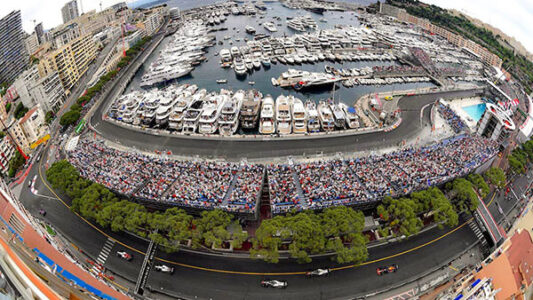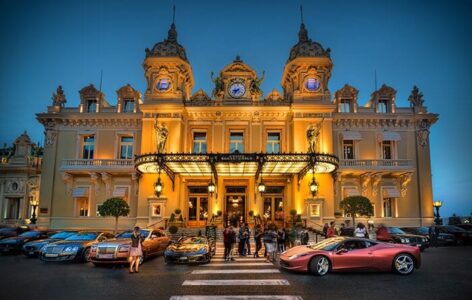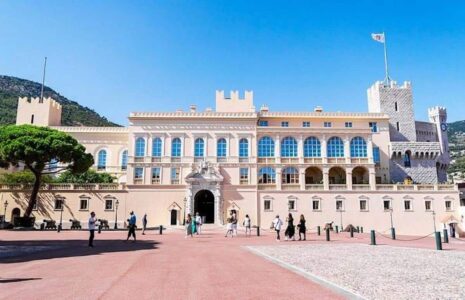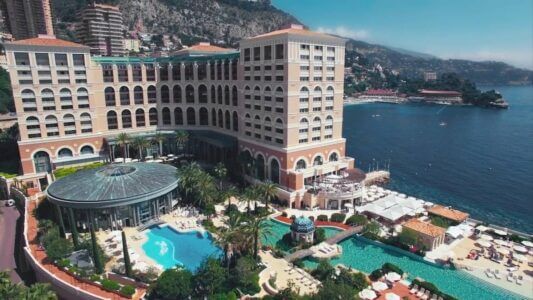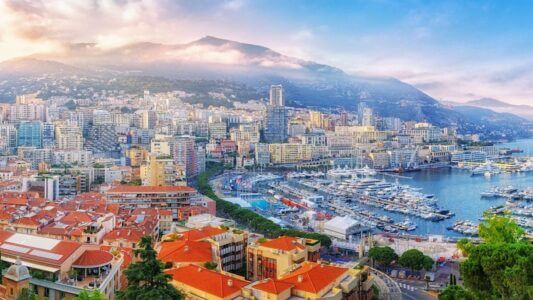Ferrero heiress Maria Franco Fissolo: discreet, devout and devoted
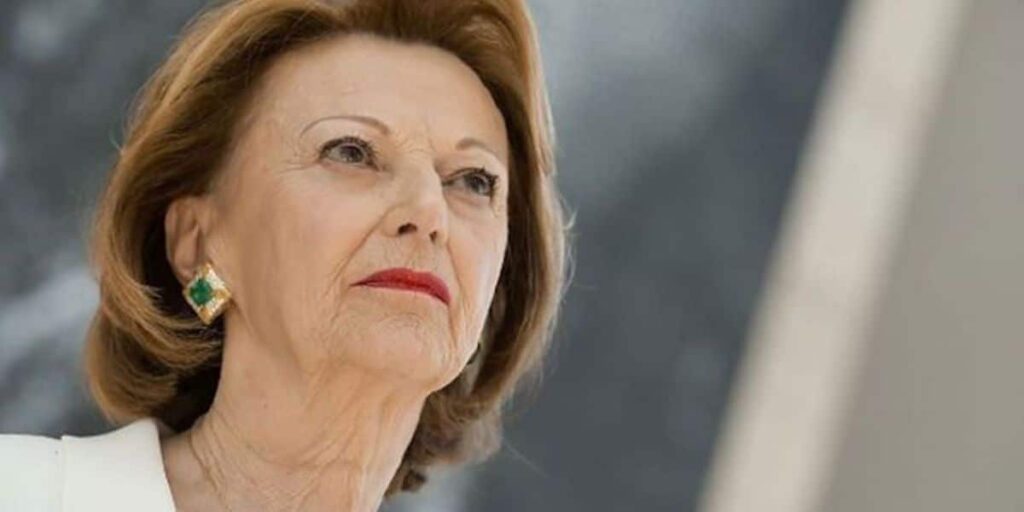
In Monaco and throughout her long life, the widow of the Nutella and Kinder egg inventor has symbolised a certain idea of luxury, discretion and social commitment.
Some portraits are easier to paint than others. Maria Franca Fissolo’s is certainly not one of them. Because although she could legitimately boast of being one of the richest women in the world, she is also one of the most discreet among the world’s wealthy.
Monastic and Monegasque, Michele Ferrero’s widow and heiress to the eponymous empire is known for the simplicity and secrecy that surround her private life. The billionaire’s rare appearances, even in the Principality, can be counted on the fingers of one hand. Presenting a portrait, necessarily in sfumato, of the “Discrète du Rocher” (the Discreet Lady of the Rock)
From love at first sight to fleeing the Red Brigades: a love story turned upside down by history
Maria Franca Fissolo was born in Savigliano, in the Italian Piedmont region, in 1939. After secondary school, she attended the School of Interpreters at the Carlo Bo University in Milan, where she became a polyglot, mastering English, French and German in addition to her native Italian.
Degree in hand, she was hired at the age of 22 as a translator and interpreter at Ferrero, a rapidly expanding chocolate factory in the Italian town of Alba, in the province of Cuneo.
Since the end of the Second World War, the family business was run by Michele Ferrero, the son of Pietro Ferrero, who invented “Supercrema” in 1949, a spread made from milk, hazelnuts and cocoa butter.
What was to follow reads like a fairytale. One day, the interpreter was called in to replace a colleague at short notice during an important business negotiation with the boss. Michele congratulated her. Over the next few days, Michele and Maria Franca bumped into each other in the corridors, in meetings and in the lift at the chocolate factory.
Each time, Michele was unable to contain his feelings for the young woman, who refused his advances – he was 14 years her senior. But the heir persevered, convincing his colleague to accept an invitation to the restaurant. “That evening, we stopped using the formal form of address and our lives changed,” Maria Franca told Corriere della Sera in a rare interview in 2024.
“It was love at first sight,” she told La Stampa. From that restaurant, the young woman could see a house in the hills above Pino Torinese, near Turin. “A month later,” she recalled in the Italian evening daily, “Michele bought that house, and seven months later we got married and lived there. It was our home for fifteen years, until the general arrived.”
The ‘general’ referred to by Maria Franca Fissolo was the head of the Special Anti-Terrorist Unit in Turin who telephoned the Ferrero house in the mid-1970s. “Your husband,” the officer told the businessman’s wife, “is on the Red Brigades’ hit list,” the far-left terrorist organisation that brought terror to Italy during the “Years of Lead.”
The Ferreros’ lives were turned upside down. The day after the call, Maria Franca and the two sons she’d had with Michele – Pietro, born in 1963, and Giovanni, born in 1964 – fled Italy for Brussels, while their father went into hiding in the Langhes region of Piedmont.
Also targeted by the Red Brigades, many families of Italian industrialists took refuge at the same time on the neighbouring Côte d’Azur, particularly in Monaco. The Riva family (Italsider), the Benettons (clothing), the de Benedettis (Olivetti), the Florio family (trade)… all chose the Principality, at least periodically, to ensure the safety of their loved ones while continuing to run their businesses from the neighbouring peninsula.
Maria Franca Fissolo’s style: “Always present, never intrusive”
But not Maria Franca – or at least not yet. Far from the Italian sun, she endured “twenty-five years of rain” as she put it. But certainly not twenty-five years of idleness. Michele’s inseparable right-hand woman – and definitely “never his secretary,” as she stressed to La Stampa in 2019 – she witnessed first-hand the creation of a consumer society legend: Nutella.
During a seminar in Frankfurt, the couple were resting at the hotel when Michele exclaimed: “Just give me a moment, I’ve nearly got it… Nutella!” The company director explained to his visibly confused wife: “That’s the name of the product that’s going to become world-famous.”
Maria Franca saw that same fire in her husband’s eyes when he invented the Kinder egg – “it’ll be Easter all year round,” he reportedly told his faithful confidante.
The discreet Maria Franca became omnipresent in the family group over the years. At the heart of the Ferrero engine from the early days of the group’s internationalisation, she oversaw both human resources and political relations, not forgetting her institutional role.
Alongside Michele, “Mrs. Ferrero constantly managed the institutional relations of the Ferrero Group with all major political, economic and social counterparts,” reported The National Italian American Foundation (NIAF) in 2016.
A leading role, but always in the shadows: “Maria Franca was never in the limelight,” confirmed La Stampa in 2024, “and this is perhaps precisely what fuelled respect and admiration for her. Always present, never intrusive, elegance through simplicity. A genuine smile, a kind word, a gesture of encouragement.”
Her very Christian reserve is the mark of the profound faith that drove the Ferrero couple. A devout Catholic, Michele said in 1996: “we owe Ferrero’s success to Our Lady of Lourdes. None of it would have been possible without her.”
Ferrero’s founder was a devout follower of the French Pyrenean Virgin : each of the group’s factories features a statue of the Madonna above the entrance, and not a year goes by without the group holding a board meeting in Lourdes.
As for Maria Franca, she embodies better than any other Italian the image of the “donna casa e chiesa,” a “house and church wife” as the peninsula inhabitants, with a mix of admiration and derision, like to refer to very pious women with an almost monastic lifestyle.
A life marred by tragedy
But neither faith nor wealth, no matter how immense, can provide immunity from life’s tragedies. Maria Franca learned that most painful of lessons, losing her brother, husband and son in the space of a few years.
In 2011, Pietro, the Ferreros’ eldest son, died tragically in a motorbike accident in South Africa. “I’ve been lucky, but I lost Pietro, who was only 47, and to lose a son is inhuman,” the grieving mother told Corriere della Sera, adding that “life’s pains erase the colours, it feels like living in black and white.”
Four years later, Michele died of heart failure in Monaco. “I spent 53 years at Michele’s side,” she told La Stampa a few months after the death of her husband and partner.
When Michele Ferrero died, his wife inherited a veritable empire: the eponymous group now has some forty factories, over 47,000 employees and turnover in excess of €18 billion. The Alba chocolate-maker’s inventions – Nutella, of course, but also Tic Tacs, Ferrero Rocher, the Kinder range, Mon Chéri, and so on – are a worldwide success.
Shortly before his death, Michele was the richest man in Italy, with an estimated fortune of $18 billion. He left his wife a fortune estimated at $25.2 billion in 2017, making her the world’s eldest female billionaire that year.
Forbes magazine later revalued Maria Franca Fissolo’s fortune at ‘only’ 2.3 billion dollars, given that most of the assets, such as the management of the Ferrero group, passed to the couple’s second son, Giovanni, after Michele’s death.
Although Maria Franca has stepped back from the day to day running of Ferrero since Michele’s death, she continues to have an impact on the company, its employees and the area where it was founded. In Alba, the woman the locals call “la signora” (“the lady”) is “one of us” according to her employees, “part of our history, like the scent of cocoa in the air” in the Piedmontese town.
Now a Monaco resident, every time she visits Alba, la signora has a word for the farmers, a gesture for her employees, many of whom she knows by name. “When she’s here, everything seems more solemn and, at the same time, more familiar,” commented a local winemaker, interviewed by La Stampa.
That image faithfully reflects Maria Franca’s reserved and pious character. She now devotes her time and money to social projects, giving substance to the family motto: “Work, create and give.”
“Work, create, give“: philanthropy, a natural extension of success
It’s a credo that the Ferreros put into practice in 1983 when they set up the foundation that has since borne their name. Concerned with education, dignity at work, support for the most vulnerable and the arts and culture, the Ferrero Foundation focuses its efforts on local communities and the Group’s employees.
“For the Ferreros, creating wealth means first of all making excellent products that generate business,” Francesco Paolo Fulci, the former Chairman of the Foundation, explained to Nouvel Obs in 2016, “and then providing the workers with the best working and living conditions.”
Pioneers of ethical capitalism and corporate social responsibility (CSR), Michele and Maria Franca always felt duty bound to take care of their employees and their families: holiday camps for the children, community spaces for retirees (with artistic, cultural, charity and sporting activities, lifelong learning, etc.), medical assistance, a state-of-the-art, intergenerational creche for working mothers, and so on.
“We have achieved things that I am very proud of, such as offering a quality of later life to all those who have worked with us,” Maria Franca Fissolo told Corriere della Sera, “as well as including the elderly in the activities we provide for the children.”
Exceptional in terms of both intensity and consistency, the dedication of the “Nutella empress” has been rewarded many times over. Two years running, Ferrero won the Randstad Award for the most attractive and responsible employer; in 2016, Maria Franca Fissolo received the NIAF award for her commitment to philanthropy in the United States; and in 2024, she was made a Knight of the Grand Cross in the Order of Merit of the Italian Republic.
The award represents, in her words, “a personal distinction, but also a great encouragement to continue my commitment to the values of our Republic.” “As I receive it,” she told the Cuneo online media, “my thoughts go out to all those who have supported and accompanied me throughout my life (…). Through their example and their closeness, I have been able to face the challenges that life has thrown at me with determination.”
An elegant retirement in Monaco
At the age of 86, Maria Franca Fissolo is now enjoying a peaceful and pious retirement in Monaco. Although she regularly appears in the rankings of the Principality’s wealthiest individuals and her name appears here and there in the press, her presence on the Rocher could hardly be more discreet: no local public or economic involvement, no social events, almost no appearances.
The pinnacle of anti-bling-bling. Embodying loyalty to family values, discretion and corporate social responsibility in a way that is rare these days, Maria Franca Fissolo Ferrero symbolises a certain idea of luxury, Christian reserve and the continuity of Italian industrial values in the Principality.


